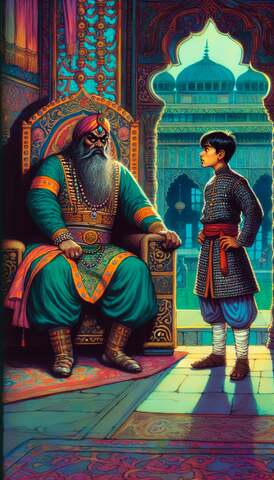
战国时期,魏王想要派兵攻打赵国的首都邯郸。
季梁听到了这个消息后,立刻停止了他的旅程,决定回去劝阻。
回到国家后,他急急忙忙地去见魏王,对他说:“我刚刚在路上看到一个人正在驾着马车往北方走,但他告诉我他想去南方的楚国。我说你要是想去南方,为什么现在却往北方走呢?他回答说他的马跑得快、有足够的旅费、还有很好的马夫,所以一定能到楚国。但是你知道吗?因为他走的是相反的方向,马跑得越快、旅费越多、马夫越好,只会让他离楚国越来越远。”
季梁接着说:“今天大王你想成为霸主,让所有人都信任你,可是你现在却想用强大的军队去攻打赵国,以此来扩大你的领土和威望。这样做下去,只会让你离你的目标越来越远!就像我遇到的那个人,他想去楚国却往北方走一样,永远也达不到目的!”
人们把季梁讲的这个故事叫做“南辕北辙”。
“辕”是古代马车前部套在牲口左右两边的木头,用来拉车。
“辙”是指车轮走过后路面留下的痕迹。
这句成语就用来比喻人的志向和实际行为相反。
During the Warring States period, King Wei of Wei wanted to send troops to attack Handan, the capital of Zhao.
After hearing this news, Ji Liang immediately stopped his journey and decided to go back to persuade him.
After returning to the country, he hurriedly went to see King Wei and said to him, "I just saw a man driving a carriage north on the road, but he told me that he wanted to go to Chu in the south. I said if you want to go south, why are you going north now? He replied that his horse runs fast, has enough travel expenses, and has a good driver, so he can definitely reach Chu. But do you know? Because he is going in the opposite direction, the faster the horse runs, the more travel expenses he has, and the better the driver is, the farther he will be from Chu."
Ji Liang continued, "Today, Your Majesty wants to become a hegemon and make everyone trust you, but now you want to use a powerful army to attack Zhao to expand your territory and prestige. If you continue like this, you will only get farther and farther away from your goal! Just like the person I met, who wanted to go to Chu but went north instead, he would never reach his destination!"
People called the story Ji Liang told "Going South by Driving the Chariot North".
"Yuan" refers to the wood on both sides of the front part of the ancient chariot that was tied to livestock to pull the chariot.
"Zhe" refers to the traces left on the road surface after the wheels pass.
This idiom is used to比喻 a person's aspirations and actual behavior are opposite.